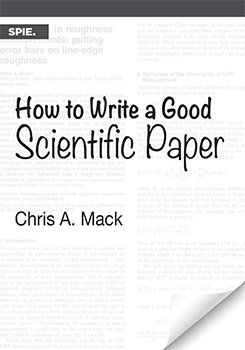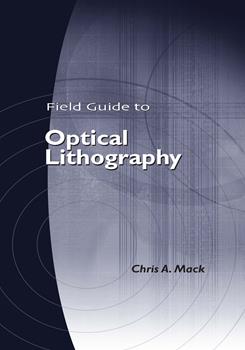
Chris A. Mack received Bachelor of Science degrees in physics, chemistry, electrical engineering, and chemical engineering from Rose-Hulman Institute of Technology in 1982, a Master of Science degree in electrical engineering from the University of Maryland in 1989, and a Ph.D. in chemical engineering from the University of Texas at Austin in 1998. Mr. Mack founded FINLE Technologies, the developer of the lithography simulation software PROLITH, in 1990, serving as President and Chief Technical Officer until the acquisition of FINLE by KLA-Tencor in 2000. For the next five years he served as Vice President of Lithography Technology for KLA-Tencor. In 2003 he received the SEMI Award for North America for his efforts in lithography simulation and education. He became a fellow of SPIE in 2006, and a fellow of IEEE in 2010. In 2009 he received the SPIE Frits Zernike Award for Microlithography. He is also an adjunct faculty member at the University of Texas at Austin and spent the Fall 2006 semester as a visiting professor at the University of Notre Dame. He has recently completed a comprehensive graduate-level textbook on optical lithography, Fundamental Principles of Optical Lithography, published in late 2007. In 2012 he became Editor-In-Chief of the Journal of Micro/Nanolithography, MEMS, and MOEMS (JM3). In 2017 he cofounded Fractilia, where he now works as Chief Technical Officer developing metrology solutions for the measurement of roughness.
This will count as one of your downloads.
You will have access to both the presentation and article (if available).
This guest editorial by former Editor-in-Chief Chris Mack introduces JM3’s new co-editors-in-chief, Harry Levinson and Hans Zappe.
Aim: Unbiasing of roughness measurements is best accomplished by taking advantage of the frequency characteristics of the noise to measure and subtract it out. This requires the ability to detect edges in a noisy SEM image without the use of standard image filtering techniques
. Approach: A physics-based inverse linescan model is used to robustly detect edges in high-noise SEM images without the use of filtering or image averaging. To validate the efficacy of SEM noise measurement and subtraction, rough features were measured under a wide variety of SEM settings, including number of frames of averaging and voltage.
Results: In all cases, the vast majority of the measurement bias was properly subtracted out. Over a wide range of SEM settings the biased roughness varied by more than a factor of two, but the unbiased linewidth roughness varied by only a few percent.
Conclusions: The approach of inverse-linescan edge detection followed by noise measurement and subtraction leads to reliable estimates of the true (unbiased) line-edge and linewidth roughness of features on the wafer. These unbiased estimates are quite insensitive to metrology tool settings over a reasonable range of values.
Aim: Why is there a disconnect between the optical lithography that has enabled decades of Moore’s Law behavior and the many other lithographic techniques that seem to follow Tennant’s Law?
Approach: The answer lies with the concept of stochastic-limited lithography. By developing very simple scaling relationships, a physical explanation for Tennant’s Law can be provided. By applying this explanation to optical lithography, its past can be explained and its potential for future success examined.
Results: While optical lithography has not been stochastic-limited in the past (thus allowing it to avoid the fate of Tennant’s Law), in the future it will surely become stochastic-limited.
Conclusions: The answer to the title question “Will stochastics be the ultimate limiter for nanopatterning?” is clearly yes whenever throughput plays an important role in economic viability.
Stochastic modeling in lithography: autocorrelation behavior of catalytic reaction-diffusion systems
Stochastic modeling in lithography: autocorrelation behavior of catalytic reaction-diffusion systems
FT-IR method to determine Dill's C parameter for DNQ/novolac resists with e-beam and i-line exposure
This will count as one of your downloads.
You will have access to both the presentation and article (if available).
This course discusses the techniques required to characterize and optimize an optical lithography process. The lithographic process is made up of a series of basic steps: the formation of an aerial image, the transfer of the aerial image into the photoresist during exposure, and the development of this latent image into the final photoresist profile. In order to characterize and optimize this process one must understand the principles and interactions of each step of the process.
Moore’s Law has been changing the world for over 50 years, and advances in lithography have been a (the) major factor in its success. The success of lithography scaling, however, may cause the undoing of Moore’s Law as smaller features become susceptible to stochastics variations such as linewidth roughness, local critical dimension uniformity, and stochastic defects. This course will look at how stochastic variation during lithography affects semiconductor devices, how to measure stochastic variations, the major causes of stochastic variation, and what stochastics will mean for the future of lithography scaling.
1. Introduction to Line-Edge Roughness (LER) and Linewidth Roughness (LWR): LER Experimental Results, Device Effects, LER Trends
2. Metrology for LER/LWR: Power Spectral Density Measurement, Low-frequency roughness and feature-to-feature variation, High-frequency roughness and within variation, Measuring roughness using SEM images, Simulating rough features
3. Stochastic Modeling Fundamentals – No Longer a Continuum: Discrete Random Variables, Binary Distribution, Poisson Distribution, Example – Chemical Concentration
4. A Stochastic Model of Lithography: Optical Imaging – Photon Shot Noise, Photon Absorption and Exposure, EUV Resist Exposure, Diffusion – A Random Walk, Reaction-Diffusion, Acid-Base Quenching, Development, The LER Model, Efficacy of LER post-process smoothing
5. Future Work
Moore’s Law has been changing the world for over 50 years, and advances in lithography have been a (the) major factor in its success. This course will review several major conceptual and technical underpinnings of lithography for semiconductor manufacturing, providing a large, holistic view of where we are, how we got here, and where we are going next. Topics include Moore’s Law, resolution and depth of focus, the components of optical resolution, chemically amplified resists, lithography impacts on design, and next generation lithography.
1. Moore’s Law – History, components, meaning, Dennard scaling, impact on lithography
2. The focus-exposure matrix, depth of focus, and the Normalized Image Log-Slope (NILS)
3. Chemically amplified resists, acid and quencher diffusion, and isofocal bias
4. Imaging, resolution, and the change from three-beam to two-beam imaging
5. Design – WYSIWYG, design rules, litho-friendly design
6. The Future – what will be the next generation of lithography? How will it impact Moore’s Law?
This course presents the theory and applications of optical lithography simulation tools. Using examples, practical applications to typical material and image problems will be discussed.
This course discusses the basic principles and techniques of an optical lithography process. The course gives a general overview of optical lithography and goes into some depth on important topics.
View contact details
No SPIE Account? Create one



